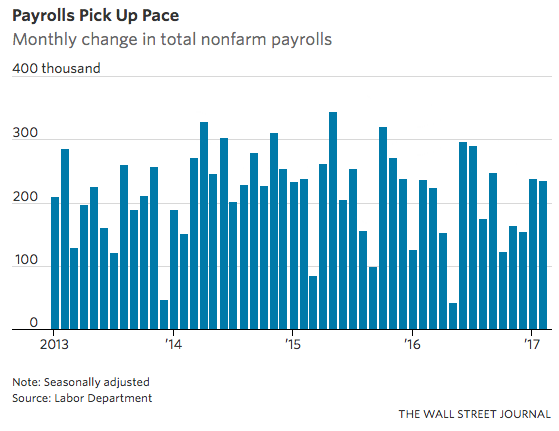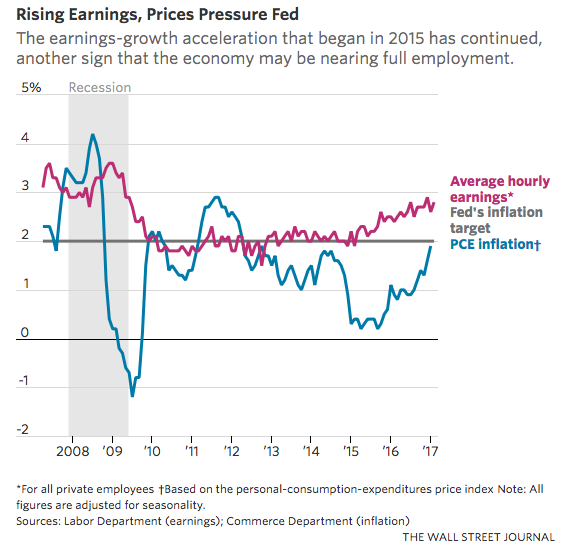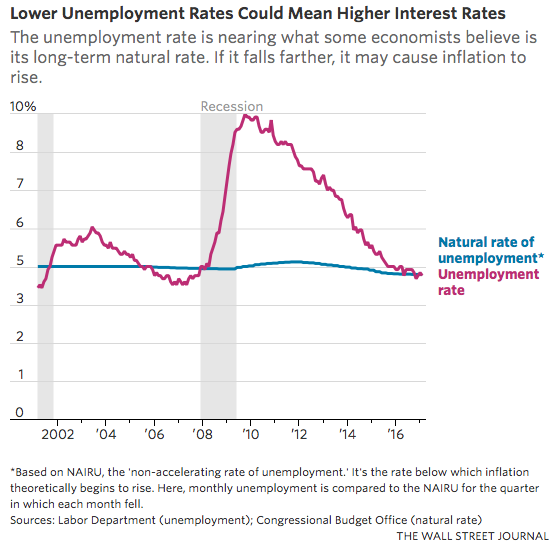Robust Job Growth, Higher Wages Show Solid Labor Market
Data clears the way for Fed rate increase next week
… The U.S. economic expansion is now the third-longest on record and showed no signs of letting up in February, with robust hiring, falling unemployment and firmer wage growth opening the way for the Federal Reserve to raise short-term interest rates.
Nonfarm payrolls rose a seasonally adjusted 235,000 from January, exceeding forecasters’ expectations, and the unemployment rate ticked down to 4.7%. Average hourly earnings in the private sector rose 2.8% from a year earlier, a sign that the tightening job market is pushing employers to raise pay.

... The mild winter likely boosted the pace of hiring, especially in the weather-sensitive construction sector. The construction industry added 58,000 jobs last month after adding 40,000 in January, strong gains that some economists said could lead to weaker readings in the spring.
Meantime, there is little sign of acceleration in overall economic activity during the early months of 2017; many forecasters expect another quarter of sub-2% growth due to a wider trade deficit and moderate consumer spending.
…
Still, there are hints of building momentum. The share of Americans in their prime working years, ages 25 to 54, who were employed in February, hit 78.3%, the highest level since October 2008. The labor-force participation rate ticked up to 63%, a sign that a healthier job market is stemming a tide of labor-force dropouts.
… Manufacturers added 28,000 jobs in February and 57,000 positions over the past three months.

… At 2.8%, February’s annual growth for private-sector hourly earnings matched the second-highest reading of the current expansion. Some of the strongest wage growth has come at the bottom of the pay scale; the leisure and hospitality sector, for instance, saw earnings rise 4.2% on the year. ...
... Some 23.8% of America’s 7.5 million unemployed workers have been out of a job for longer than six months, an elevated rate of long-term unemployment, compared with the prerecession years. An additional 5.7 million people are working part-time because they can’t find full-time jobs. And the pace of wage growth, while improved, remains below precrisis levels.








